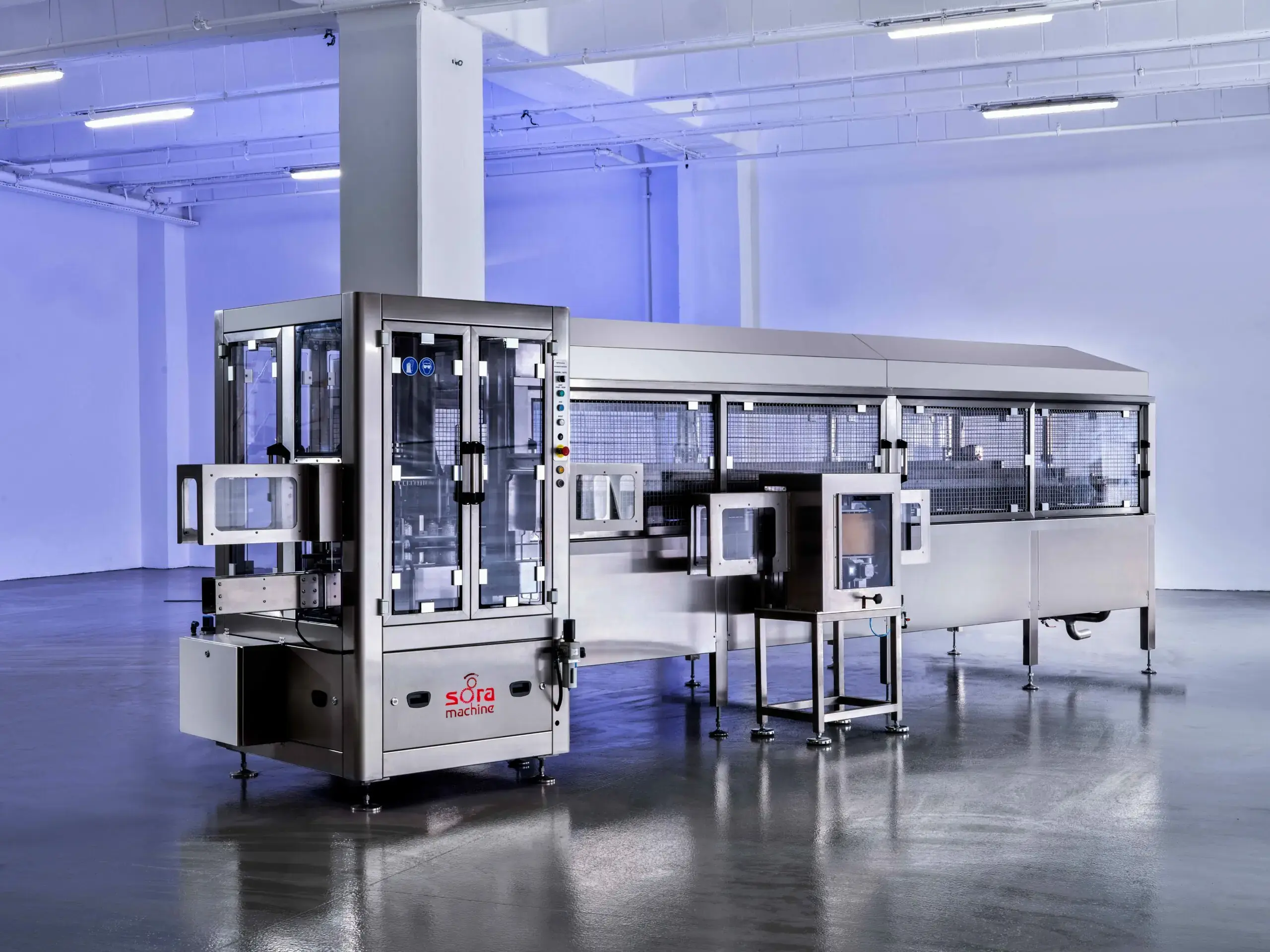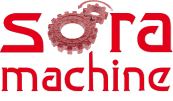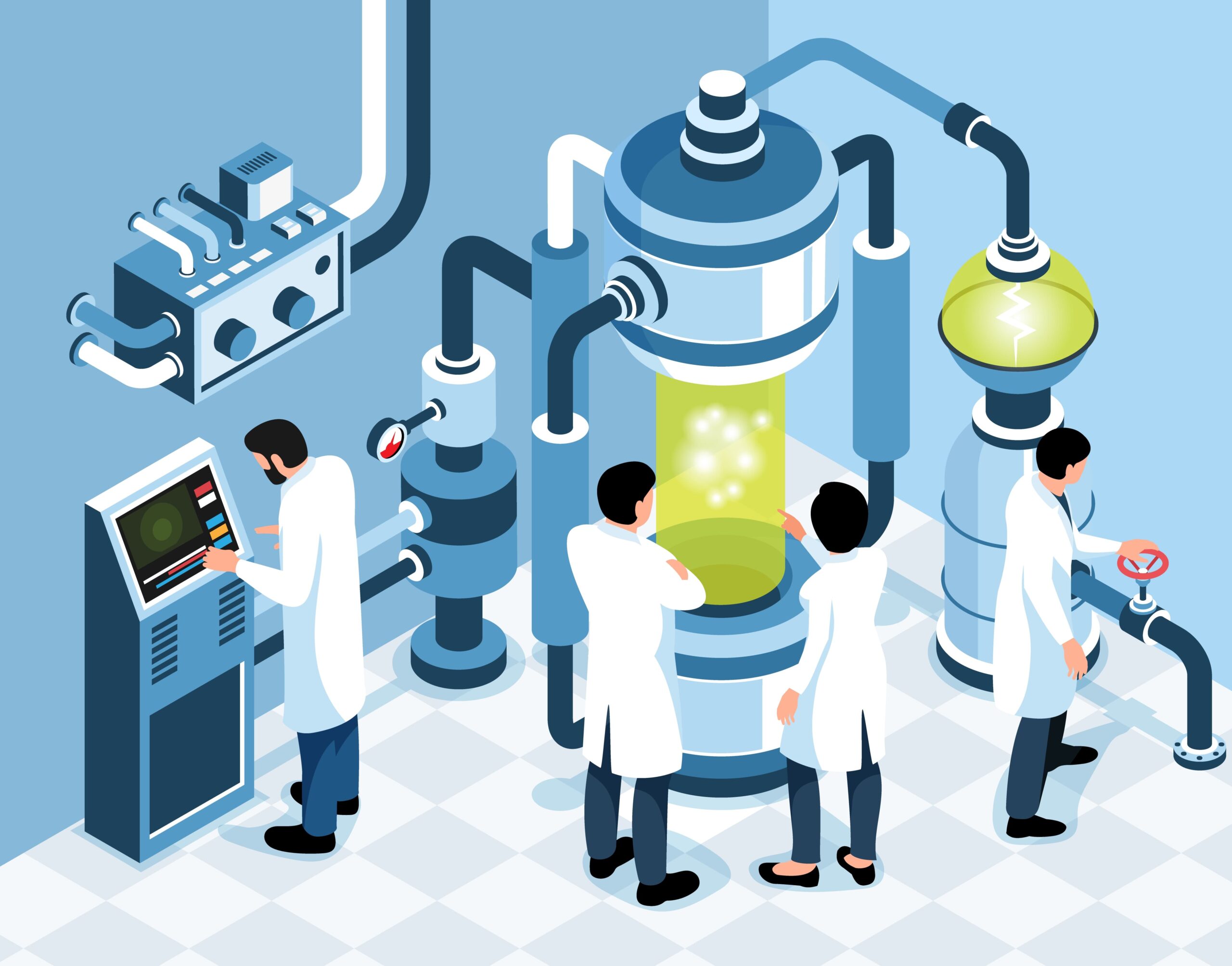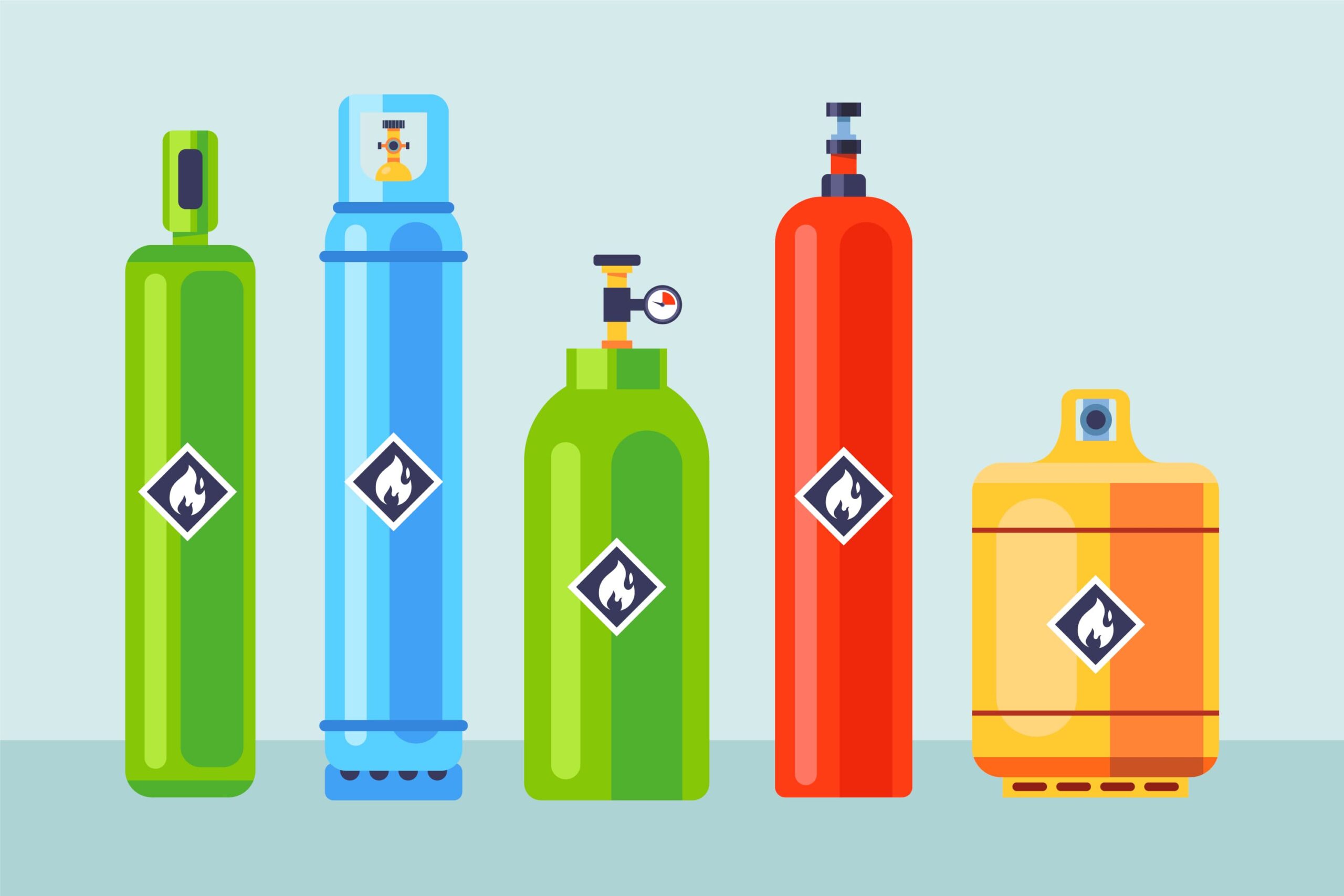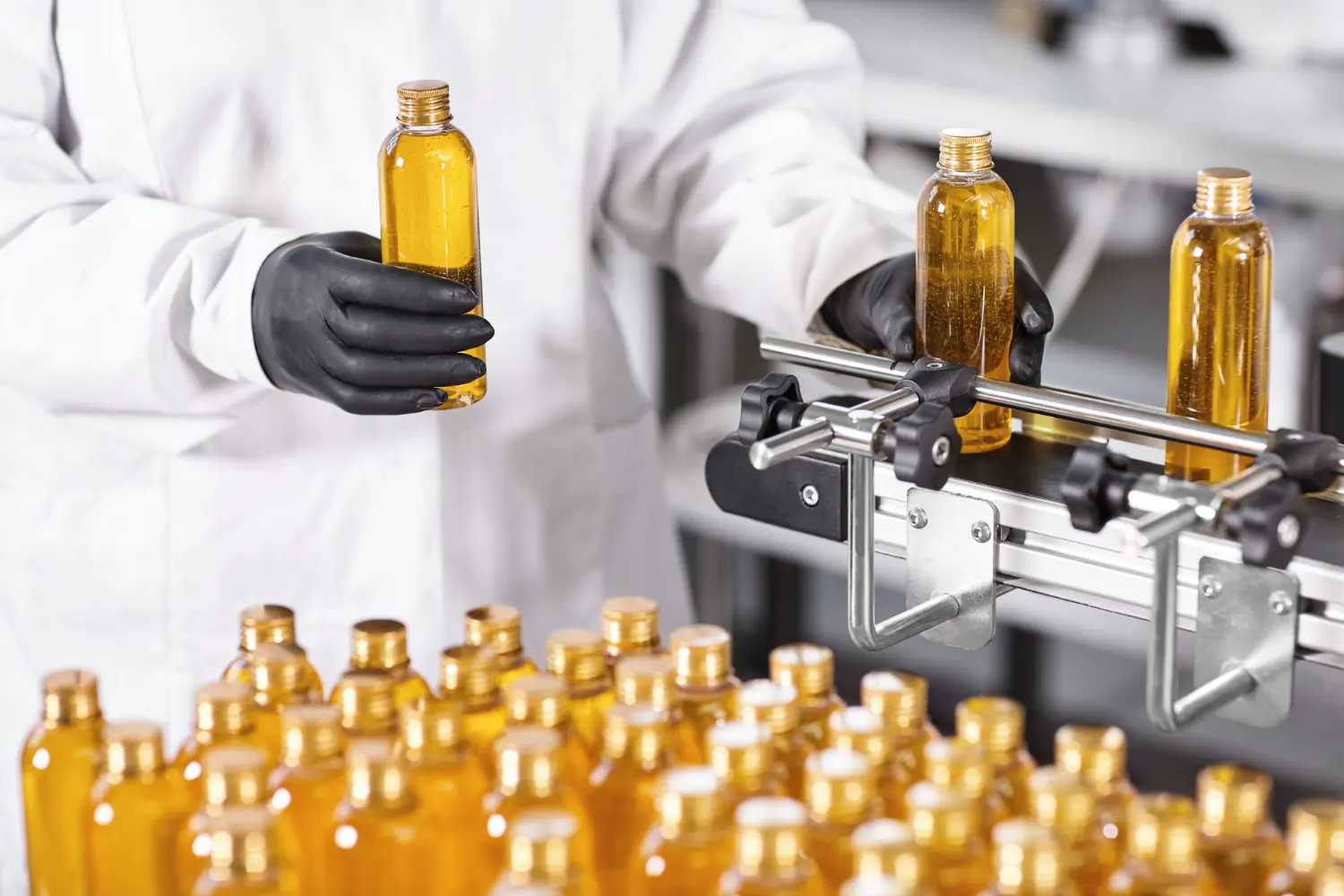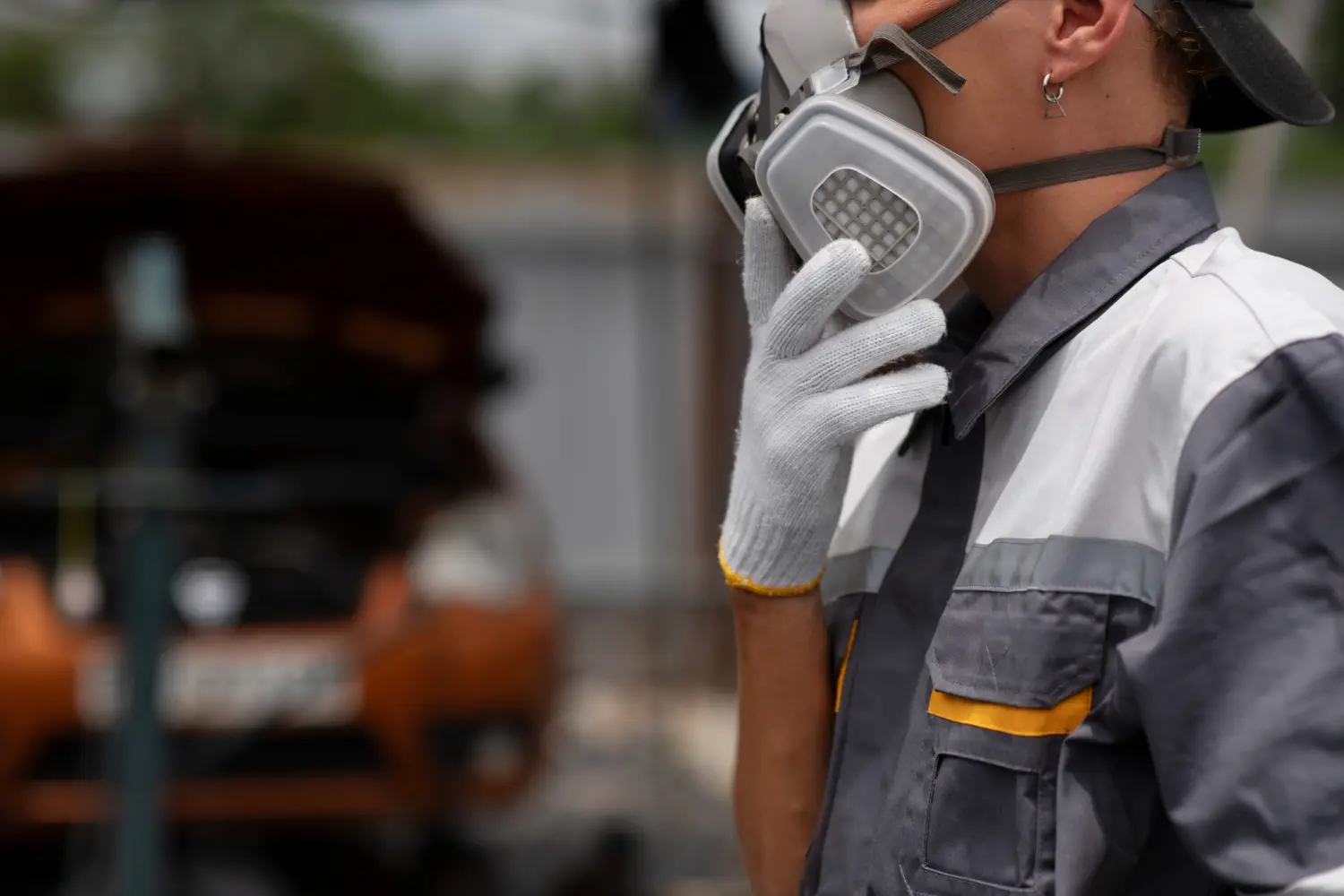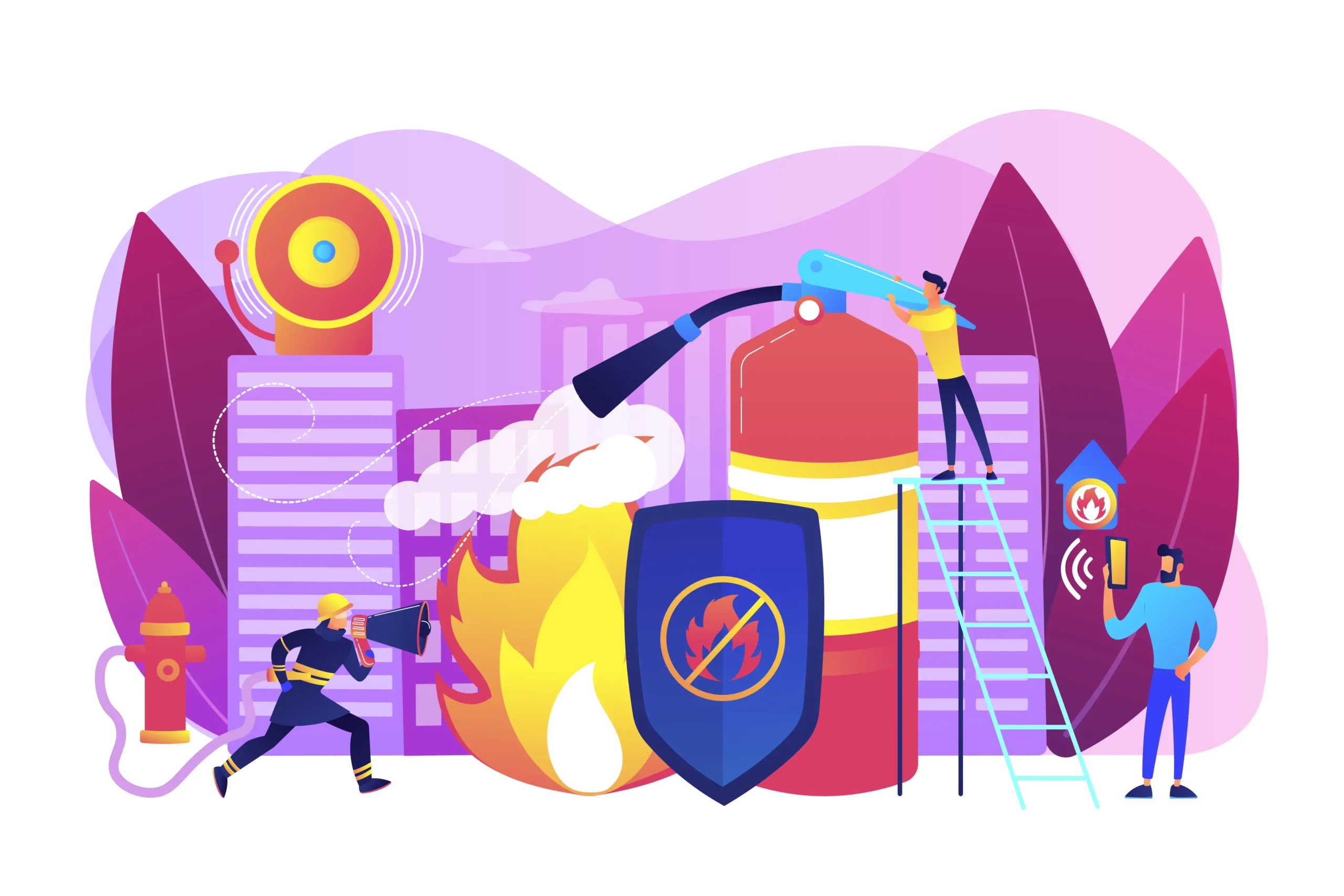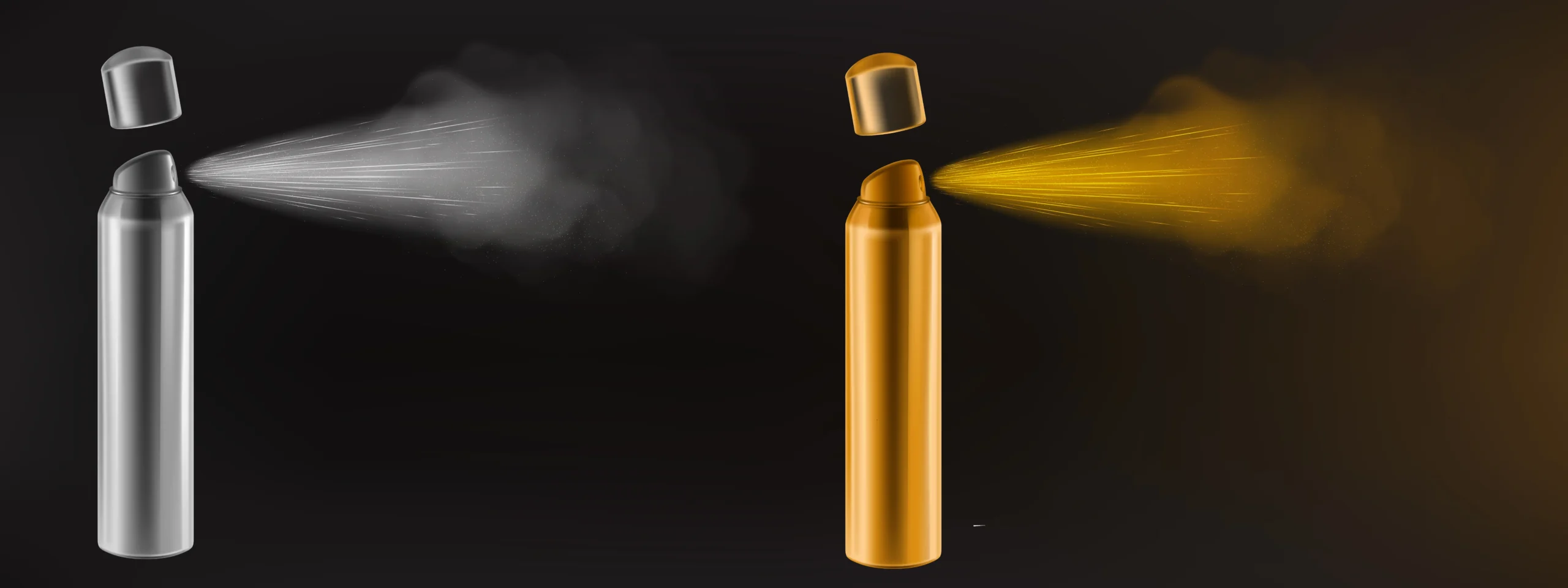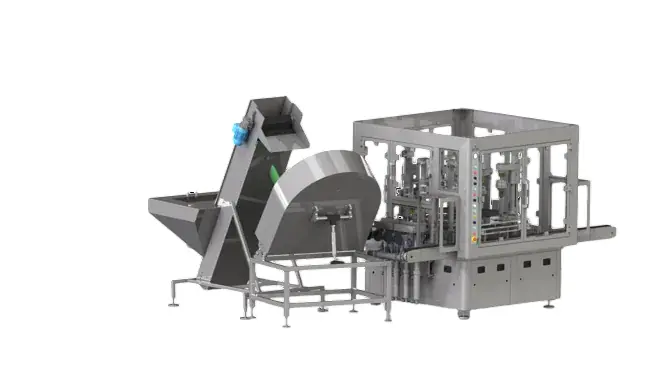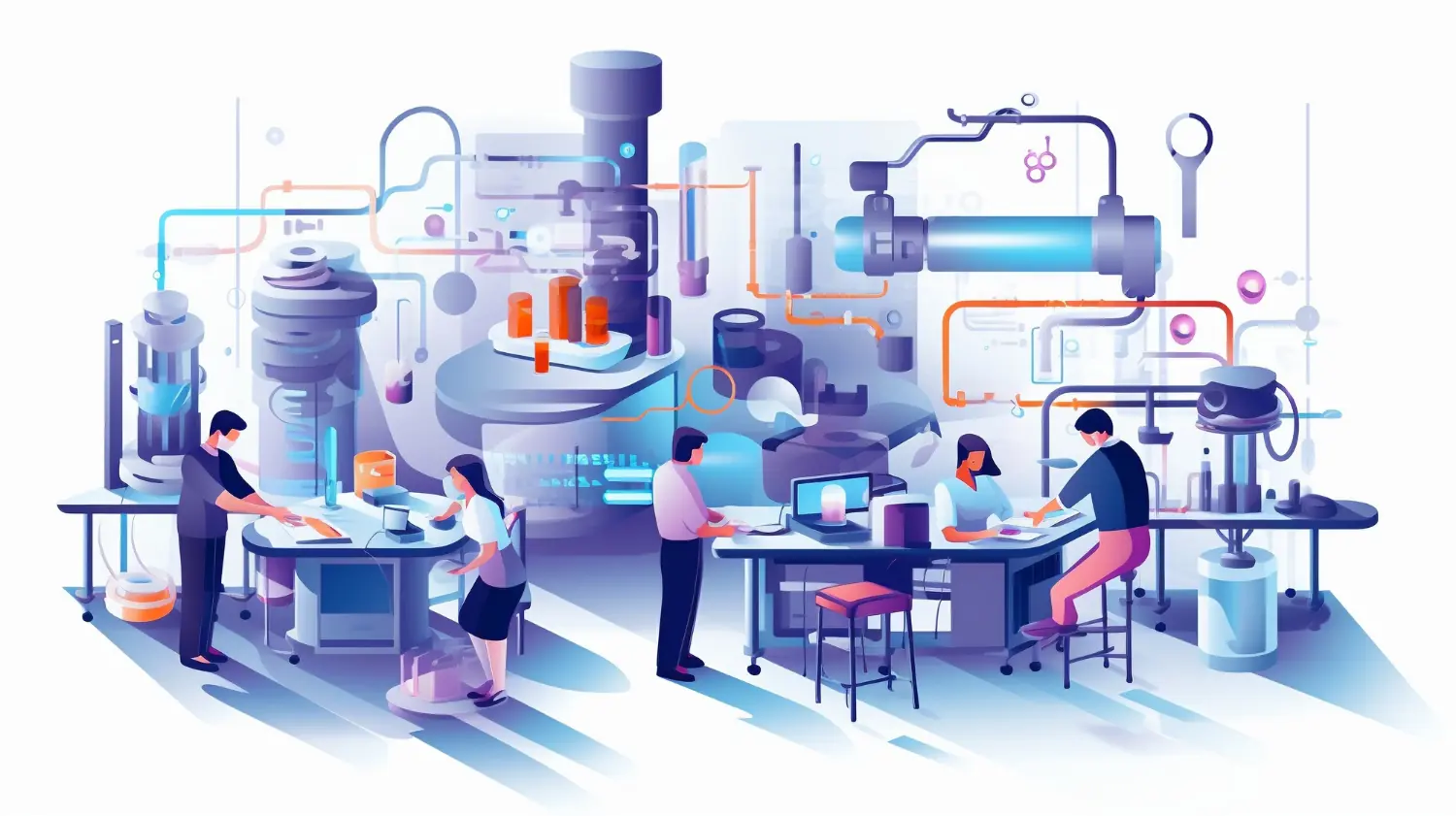If you’re struggling to choose in the aerosol filling machine market, you need to learn some crucial information about the fundamental factors that determine your choice. Finding the right type of machine not only saves time and money but also helps you avoid potential risks that could affect the quality of your final aerosol products. The choice of an aerosol filling machine is a critical production decision, whether you are manufacturing personal care items, household goods, or industrial aerosols.
The Importance of Correct Selection and Key Factors
Why Cooperate with the Best Manufacturer?
Collaborating with the best automatic aerosol filling machine manufacturer is vital for several reasons.
- Efficiency and Reliability: A top-tier manufacturer provides machines built with advanced technology and precise engineering, ensuring reliable and consistent performance. This means less downtime, minimal maintenance requirements, and consequently, higher output rates.
- Quality Assurance and Compliance: Machines sourced from reliable manufacturers are designed to comply with strict regulations and safety requirements. This ensures your products meet or exceed quality standards, thereby protecting your brand integrity.
- Comprehensive Support: Leading manufacturers prioritize customer support, offering ongoing assistance throughout the machine’s lifespan, from installation and training to troubleshooting and spare parts availability. This level of support minimizes operational disruptions and enhances your team’s proficiency in utilizing the equipment effectively.
- Innovation and Long-Term Partnership: Partnering with a leader fosters long-term collaborations and opportunities for innovation. You gain access to advanced solutions and potential customization options tailored to your specific requirements, helping you stay ahead of market trends.
Types of Aerosol Filling Machines (By Filling Technology)
Generally, there are three types of aerosol filling machines:
- Traditional (Regular) aerosol filling machines
- Bag on valve (BOV)BOV is a greener and 100% recyclable packaging system where the product is separated from the propellant. aerosol filling machines
- Under cap aerosol filling machines
Traditional Aerosol Filling Machines
This type of machine is also known as a traditional aerosol filling machine due to its long history and wide range of applications. It is generally compatible with the process of liquid filling, crimping, and gas filling. The application range extends from daily consumer aerosol products to technical aerosol products like rust remover spray.
Bag On Valve (BOV) Aerosol Filling Machines
This type of machine is superior in many ways in terms of formulation compared to traditional types and is more inclusive because the gas and liquid are filled separately. With BOV technology, the product is separated from the propellant and is 100% recyclable. This makes it a more environmentally friendly packaging system.
- BOV systems may be the best solution for products that need to be highly corrosive and eco-friendly, such as cosmetics, food, nasal spray, and fire extinguishers.
- During filling, the material is drawn into a vacuum bag that holds the filling material.
- Working with a BOV system typically requires specialized filling equipment.
- It can fill up to 99% of the can’s volume.
- The machine must have a pressure sensor to detect if the internal pressure is too low; otherwise, the bag cannot be sealed properly.
Under Cap Aerosol Filling Machines
This type of machine combines the functions of vacuuming, gas filling, crimping, and gas recovery in a single working station. Since the filling process is done under the cap and in a vacuum environment, it requires vacuuming before other filling processes. It is used for filling refrigerant gas (F12, F22, R134a), air conditioning lubricants, and butane gas cartridges.
Aerosol Filling Machine Configurations (By Automation and Efficiency)
Before starting machine selection, the desired level of efficiency must be determined.
| Desired Production Capacity | Recommended Machine Type | Operation Level |
|---|---|---|
| Hundreds of cans per day | Manual Machine | Slowest / Cheapest cost |
| Thousands of cans per day | Semi-automatic Machine | Medium efficiency / Medium budget |
| High capacity up to hundreds of thousands of cans per day | Full-automatic Machine | Highest speed / High purchase cost |
Manual Aerosol Filling Machines
This manually operated configuration comes with gas filling station, crimping, and liquid filling stations. Although there are manual or automatic operation options for each station, this configuration cannot be operated fully automatically. It has the slowest efficiency and is the cheapest in cost.
Semi-automatic Aerosol Filling Machines
Semi-automatic machines are a great solution for small-scale production. They can fill between 1,200 and 1,800 aerosol cans per hour. They typically use four operators (one loads the cans, the second manually places the spray valve, the third puts the finished product into boxes). This configuration is suitable for customers with a medium budget and efficiency demands. It consists of components such as an automatic bottle feeding machine, a gas filling station, a crimping machine, and a liquid filling station. Customers can increase or decrease the degree of automation by adding an automatic valve feeding machine or other automatic parts.
Full-automatic Aerosol Filling Machines
Full-automatic machines are a good solution for high-speed applications and to meet the rising demand for aerosol products. They include integrated conveying systems and electro/pneumatic PLCProgrammable Logic Controller (PLC) is an industrial computer used to control the electromechanical processes (lights, motors, sensors) of a production line. controls.
- An automatic machine has four main components: a liquid filling head, a valve sorting device, a crimping head, and a gas filling head.
- It includes many automatic parts such as an automatic can feeding machine, an automatic valve feeding machine, an automatic weighing check machine, an automatic labeling machine, and an automatic packaging machine.
- Customers can choose these parts based on their budget and efficiency requirements. For example, in places where labor costs are high, labor-saving machines like an automatic valve feeding or automatic packaging machine are recommended.
Quality and Safety Criteria (Filling Machine Quality)
Safety Performance: The Most Important Feature
The aerosol filling machine is pneumatically driven. Since gas and propellant are used in production, all components must be explosion-proof for safety purposes. This is the most important feature of the machine; all other features (speed, accuracy, capacity) are based on the guarantee of safety. Machine quality is closely related to the brand of pneumatic components such as pneumatic actuators, switches, sensors, valves, and cylinders.
Mechanical and Pneumatic Schematic Design
Another factor determining the quality of the machine is the structure of the mechanical and pneumatic schematics; this design determines how the machine works, what filling speed can be achieved, and how the filling accuracy will be.
- Stable Performance: The general criterion for a qualified machine is stable performance. A machine that runs steadily and fills 50 cans per minute will be more productive than one that runs unstably and constantly breaks down, filling 100 cans per minute.
- Filling Accuracy: Gas and liquid filling accuracy is related to the size and quality of the gas and liquid cylinders used. The golden rule: The smaller the cylinder size, the higher the filling accuracy.
- Crimping System: A qualified crimping system provides an assurance regarding gas leakage issues. The sealing ring, sealing workflow, sealing jaw, valves, and cans should be examined to detect quality.
- Control and Testing: Weight and pressure control is done with a weighing check machine and a crimping diameter depth measuring device to check the finished product quality.
- Pneumatic Schematics: The gas path must work properly, and there should be no gas blockage.
Valve Compatibility and Technical Requirements
Valves are critical components that directly affect the efficiency, quality, and versatility of the aerosol packaging process. Ensuring valve compatibility is crucial when selecting a machine.
The Effect of Valve Types on Filling Machine Selection
- Standard Valves: Are generally easier to integrate into existing filling machines.
- Custom-Designed Valves: May be required for a special dispensing mechanism or regulatory standards. Machines designed for these valves offer more flexibility in adjusting valve mounting and supporting various valve technologies, which may require investing in specialized filling equipment.
- 360-Degree Valve Systems: Ideal for products that need to be sprayed at any angle of the can. Machines suitable for such systems require advanced nozzle systems, precise filling techniques, and special capping mechanisms to ensure uninterrupted dispensing.
- Valve-In-Button Systems: Systems where the valve mechanism is placed directly in the button (often used in cosmetics). Filling machines designed for these systems must have precise mechanisms to ensure correct positioning of the valve mechanism and may often require higher pressure fillings.
The Effect of Valve Diameter and Height
Valve diameter and height are critical factors that directly affect the machine’s ability to process the product correctly. The wrong valve size can lead to improper sealing, inconsistent filling, or product leakage.
Flexibility and Automation
Machines offering multi-valve support can accommodate different valve designs without major adjustments, providing a significant flexibility advantage. Automation enables quick valve changes through adjustable mountings and advanced control systems, increasing production line speed and reducing downtime.
Assembly and Testing Phases
Valve assembly and testing should be done before the filling process. This ensures the valve is correctly assembled and functioning. Valve-specific leak checks should be performed both before filling (to ensure the mounting is secure) and after (to verify the seal).
Product Specifications and Compatibility
Determining Product Formulation and Technology
- Industrial and Household Products: Products such as aerosol PU foam spray, spray paint, aerosol insecticide, and air freshener require normally configured aerosol filling machines, which include liquid filling, crimping, gas filling, and testing stages.
- Personal Care and Food Products: Products such as face spray, sunscreen, and olive oil spray may require BOV systems. These products differ in terms of the filling process and technology; for example, the gas is filled separately from other materials.
The Role of Propellant
Propellants commonly used in aerosol products include Nitrogen, Carbon Dioxide, or Butane Gas. The properties of the propellant do not affect machine selection but determine the filling accuracy requirements.
Filling Capacity
The requirement for a larger filling volume means a slower filling speed, which affects the output. A single machine might be sufficient to produce different specifications (specs) of the same aerosol product, but it should come with a changeable panel to accommodate appropriately sized aerosol cans. However, if different aerosol products such as spray paint, perfume spray, or toner spray are being produced, it is necessary to choose the correct aerosol filling machine for each product type.
Facility Setup and Operational Planning
Factory Layout
The layout is important for enhancing safety and efficiency. Some factories may require “L” shaped, while others may require “U” shaped aerosol filling machines.
Basic Infrastructure Requirements
- Electricity Supply: The electrical source required for the machine’s operation must comply with national standards and be safely equipped.
- Air Source: Sufficient air source is a basic requirement to maintain the stable and smooth operation of the aerosol filling machine. This depends on the pressure required to drive and operate the machine and is generally controlled by an air compressor.
- Gassing Room: The gas filling process should be performed in an independent location (e.g., in a gassing room) to provide safety protection.
Can and Valve Selection
Aerosol cans and valves are inevitable parts that determine the filling capacity and the filling process. Aerosol cans are usually made of aluminum or tinplate material, and valves can be male or female type. Determining the can size and valve types before purchasing the machine helps prevent unnecessary problems.
Packaging
If a fully automatic, high-speed filling line is purchased, automatic packaging equipment such as an automatic labeling machine, box, and carton machine should be considered to maintain synchronization with production.
Manufacturer Selection and Conclusion
Due to the high investment cost, manufacturers must consider as many factors as possible before making the final decision.
Guide to Finding the Best Manufacturer
- Define Your Requirements: Clarify production volume (output), types of aerosol products, budget constraints, and required customization.
- Research: Investigate potential manufacturers using industry directories, publications, and referrals from industry peers.
- Evaluate Quality and Technology: Look for manufacturers using advanced technologies such as PLCProgrammable Logic Controller (PLC) is an industrial computer used to control the electromechanical processes (lights, motors, sensors) of a production line. controls and precise filling mechanisms.
- Check Experience and Reputation: Evaluate the manufacturer’s industry experience and reputation by looking at certifications that demonstrate their commitment to quality and feedback from previous customers.
- Assess Customer Support: Evaluate the level of support provided throughout the lifecycle, including installation, training, technical support, and after-sales services.
- Consider Customization Options: Determine whether the manufacturer can accommodate your specific requirements.
- Compare Price and Value: Prioritize value by focusing not just on price but on the total cost of ownership.
- Request Quotes and Proposals: Ask for and compare detailed quotes.
- Facility Visits: If possible, conduct facility visits and on-site inspections to assess production capabilities and quality control processes firsthand.
- Finalize Partnership: Agree on terms and establish clear communication channels where expectations and timelines are clarified.
Aerosol filling technology is much more complex than other types of filling machines, and as manufacturers, we must continuously improve and update our knowledge. Partnering with the right manufacturer is essential for maintaining success, ensuring operational efficiency, reliability, and product quality.
Frequently Asked Questions About Filling Machine And Filling Technologies
Machine Types and Filling Technologies
What are the Basic Aerosol Filling Machine Types Generally Available in the Market?
There are generally three types of aerosol filling machines: Traditional (Regular) aerosol filling machines, Bag on Valve (BOVBOV is a greener packaging technology that keeps the product separate from the propellant.) aerosol filling machines, and Under Cap aerosol filling machines.
Which Products are Traditional (Regular) Aerosol Filling Machines Used For, and What are Their Processes?
These types of machines are known as traditional due to their long history and wide range of applications. They are generally suitable for liquid filling, crimping, and gas filling processes. They can be used for daily consumer aerosol products to technical aerosol products like rust remover spray.
When Should I Choose a Bag On Valve (BOV) Aerosol Filling Machine?
BOV type machines are more inclusive in terms of formulation than traditional types because the gas and liquid are filled separately. These machines offer a greener packaging system where the product is separated from the propellant and is 100% recyclable. They may be the best solution for highly corrosive and eco-friendly products such as cosmetics, food, nasal spray, and fire extinguishers. BOV systems can fill up to 99% of the can volume.
Does the BOV System Require Special Equipment or Features?
Yes, working with Bag-on-Valve systems typically requires specialized filling equipment. In this system, the material is drawn into a vacuum bag that holds the filling material. Additionally, the machine must have a pressure sensor; otherwise, the bag cannot be sealed properly if the internal pressure is too low.
For Which Applications are Under Cap Aerosol Filling Machines Necessary?
This type of machine combines the functions of vacuuming, gas filling, crimping, and gas recovery in a single station. Since the filling is done under the cap and in a vacuum environment, it requires vacuuming before all other filling processes. It is used for filling refrigerant gas (F12, F22, R134a), air conditioning lubricants, and butane gas cartridges.
Configuration and Productivity
Which Machine Configuration Should I Choose Based on My Production Volume?
There are three basic configurations based on the required daily production quantity:
- Hundreds of cans per day: Manual aerosol filling machine.
- Thousands of cans per day: Semi-automatic aerosol filling machines.
- High capacity up to hundreds of thousands of cans per day: Full-automatic aerosol filling machines.
What is the Capacity and Operation of a Semi-automatic Machine?
Semi-automatic machines are a great solution for small-scale production. They can fill between 1,200 and 1,800 aerosol cans per hour. They typically use four operators (loading, valve placement, packaging). They are suitable for medium-budget customers, and the degree of automation can be expanded or reduced with additional parts like an automatic valve feeding machine.
What are the Main Components and Advantages of Full-automatic Machines?
Full-automatic machines are a good solution for high-speed applications. They generally have integrated conveying systems and electro/pneumatic PLC controls. They have four main components: a liquid filling head, a valve sorting device, a crimping head, and a gas filling head. High configuration means high purchase cost.
What are the Benefits of an Automatic Capping/Covering Machine?
An automatic capping/covering machine ensures a smoother filling process. It operates with a PLC (human-machine interface) and provides a consistent cap seating. It can correct cap deformation, reduce online cap consumption, and offers stable operation.
Quality and Safety Criteria
What is the Most Important Quality Criterion After Safety in an Aerosol Filling Machine?
The most important feature of the machine is its safety performance; all other features (speed, accuracy, capacity) are based on the guarantee of safety. The general criterion after safety is stable performance. A machine that can fill 100 cans per minute but runs unstably will be slower than one that runs continuously and stably, filling 50 cans per minute.
Which Components Determine Machine Quality, and Why?
Aerosol filling machines are pneumatically driven. Due to the use of gas and propellant, all components must be explosion-proof. Quality can be discerned through the brand of pneumatic components such as pneumatic actuators, switches, sensors, valves, and cylinders. Pneumatic components are the factors that determine the machine’s safety performance.
How is Gas and Liquid Filling Accuracy Ensured?
Filling accuracy is related to the size and quality of the gas and liquid cylinders. The golden rule: The smaller the cylinder size, the higher the filling accuracy.
Why is the Quality of the Crimping System Important, and How is it Checked?
A qualified crimping system provides an assurance against gas leakage issues. The sealing ring, sealing flow, sealing jaw, valves, and cans should be examined to check the crimping quality.
Valve Compatibility and Product Specifications
Why Does Valve Compatibility Play a Critical Role in Machine Selection?
Compatibility is a critical factor because valves are more than just functional components; they directly affect the efficiency, quality, and versatility of the aerosol packaging process.
Is There a Difference in Machine Requirements Between Standard Valves and Custom-Designed Valves?
Yes. Standard valves are easier to integrate into existing filling machines. Custom-designed valves (for a special dispensing mechanism or regulatory standards) often require investment in specialized filling equipment that offers more flexibility, special fittings, and adjustments.
What Features Should Machines Suitable for 360-Degree Valve Systems Have?
These valve systems are used to ensure consistent spraying even when the can is positioned at any angle. These machines must typically be equipped with advanced nozzle systems, precise filling techniques, and special capping mechanisms.
How Does Valve Diameter and Height Affect the Filling Machine?
Valve diameter and height are critical factors that directly affect the machine’s ability to process the product correctly. The wrong valve size can lead to incorrect sealing, inconsistent filling, or product leakage.
Should Valve Assembly and Testing Phases be Done Before or After Filling?
In most cases, valve assembly and testing should be performed before the filling process. This ensures that potential leaks or incorrect valve functions are detected before the product is filled. However, valve-specific leak checks should also be done after filling to verify the seal.
Does the Type of Propellant Affect Machine Selection?
Propellants such as Nitrogen, Carbon Dioxide, or Butane Gas are generally used in aerosol products. The characteristic of the propellant may affect the filling accuracy requirement in machine selection, but it usually does not change the filling speed or the main configuration.
Supplier Selection and Infrastructure
Why is it Important to Collaborate with the Best Automatic Aerosol Filling Machine Manufacturer?
- Efficiency: Provides reliable and consistent performance, less downtime, and minimal maintenance requirements.
- Quality and Compliance: Ensures your product complies with strict regulations and safety requirements.
- Support: Offers comprehensive technical support, including installation, training, troubleshooting, and spare parts availability.
- Innovation: Provides access to technological advancements and potential customization options.
What Steps Should I Follow to Find the Best Manufacturer?
- Define your Requirements: Clarify factors such as production volume, product types, and budget constraints.
- Evaluate Quality: Focus on manufacturers using advanced technologies such as servo-driven systems and PLC controls.
- Check Reputation: Evaluate industry experience, certifications, and customer references.
- Compare Value: Prioritize value by considering not only the cost but also the total cost of ownership (including investment, maintenance, and operating costs).
- Inspect: If possible, visit facilities and conduct on-site inspections to assess production capabilities and quality control processes firsthand.
What Infrastructure Requirements Should I Consider for Operating the Machine?
- Electricity Supply: Must comply with national standards and be safely equipped.
- Air Source: Sufficient air source is a basic requirement for the stable and smooth operation of the machine and depends on the pressure required by the machine. The air source is generally controlled by an air compressor.
- Gassing Room: The gas filling process should be performed in an independent location (e.g., in a gassing room) to provide safety protection. The installation must comply with national standards.
How Should End-Of-Line Management Be Handled in High-Speed Fully Automatic Production Lines?
If high speed is achieved with a fully automatic line, end-of-line packaging should also be considered to remain synchronized with productivity. This can be achieved with automatic packaging machines, box and carton machines, and shrink-wrapping machines.
